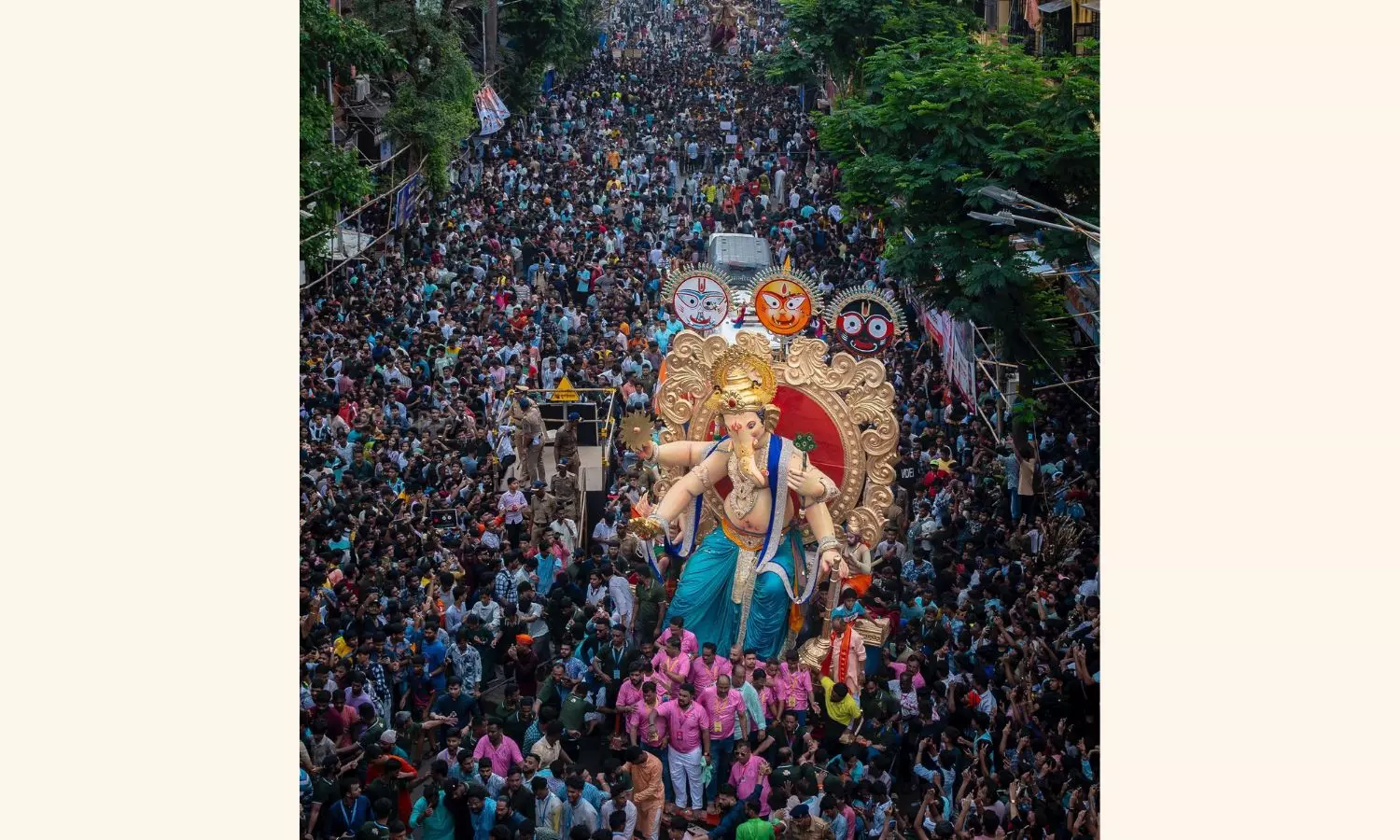Ganeshotsav served as platform for freedom movement awareness in Nizam-era

Chhatrapati Sambhajinagar: The Ganesh festival in Maharashtra's Chhatrapati Sambhajinagar (then Aurangabad) had worked as a public awareness tool about freedom from the Nizam and the British rule, as per a souvenir published by a local body in 1973.
Amid the ongoing 10-day festival, local history researchers told PTI on Sunday that despite restrictions on celebrations in the Nizam-era, people here would find a way to convey to the masses about the freedom movement. The festival, dedicated to the elephant-headed God, was celebrated in limited areas here till the erstwhile Hyderabad state (comprising areas of present-day Maharashtra, Karnataka and Andhra Pradesh) got liberated on September 17, 1948 from the Nizam rule, according to the souvenir.
The Ganeshotsav is being celebrated publicly in this Maharashtra city since 1904. But the formation of the Ganesh Mahasangh (organisation to celebrate the festival) in 1925 gave an organised face to the festival here. Many a time, the festival came under attack over themes depicted by Ganesh mandals to raise public awareness on various issues, as per the souvenir, a copy of which has been digitised by local history scholar and city-based Chhatrapati Shivaji museum director Shriprakash Purwar.
There were portrayals on themes like Shivaji Maharaj freeing 'Hind Mata' from slavery while another depicted Lord Ganesh killing a lion, which was shown as the British government. Around 1945-46, a theme named 'Azadi ki Raah Par', depicting Mahatma Gandhi keeping his hand on the shoulders of M A Jinnah and moving to the temple of Swarajya, created chaos in the city, the souvenir said.
A group of 50-60 persons pelted stones on this display, alleging that sentiments of Muslims were hurt. After police intervention, the display was opened for public again but under security, the document said. "Once freed from the Nizam rule in 1948, the festival spread across the city and there was a wave of displays which remained high till 1951," it said.
In the Nizam state, it was tough to speak against the government. Speakers from various verticals were called to put forth their thoughts. Any controversial remarks attracted legal consequences, it said. Though the Nizam rule ended on September 17, 1948, Hyderabad state existed till 1956 when it was linguistically reorganised. A demand to "break the Hyderabad state into pieces" was seen in locally distributed leaflets of Jai Hind Ganesh Mandal in the 1953 festival, as per the memoir.
Ganesh Mahasangh's former president Manohar Gawli in his article, which is part of the souvenir, said it was difficult to celebrate the Ganesh festival in the Nizam era. The Nizam's dictatorship did not let the people celebrate their festivals. Hence, the city accepted freedom fighter Lokmanya Tilak's way of celebrating the Ganesh festival, he said.
Tilak had started the community Ganesh festival in 1890s on a grand scale to mobilise people against the British rule. Gawli's article said songs about democracy, attaining freedom, apart from religious activities, were the attractions of the festival in Chhatrapati Sambhajinagar and a medium of creating awareness among the people.
The souvenir also has examples to show that the Ganeshotsav and Muharram were then observed peacefully together.
Purwar said, "It's a matter of pride for us that my ancestors have contributed to this festival. Despite curbs on celebrating Ganeshotsav in the Nizam-era, people used to find a way to give the message of freedom."
It was the only time when people from all communities and classes used to come together for a common cause, he said.
History researcher Sanket Kulkarni said according to the records, there were around 40 mandals and 11 melas (fairs) organised here during that time.
Songs appealing for social reforms and patriotism were sung all night, he said.
"Apart from displays related to the freedom movement, the other themes still remembered include the portrayal of Goddess Parvati sitting with her son Lord Ganesh with a slate and pencil in hand, conveying the message to all women to let their children become educated," he added.
Next Story

